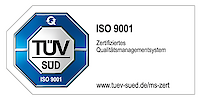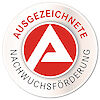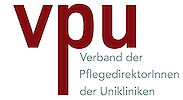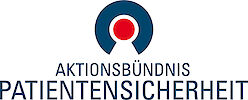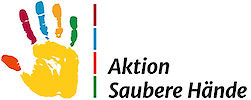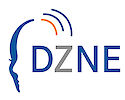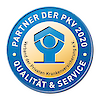Newsletter
Der WHO CC Newsletter des Instituts für Hygiene und Public Health steht Ihnen in englischer Sprache zur Verfügung.
WHO CC Newsletter No. 31 - Januar 2021
Heat-Health Action – Illustrating the link between heatwaves and drinking behaviour of older adults | Rainwater harvesting: an underestimated resource for sustainable access to water for all | Cities at risk: Flood risk, public awareness, institutional preparedness and risk communication in Yangon, Myanmar
Dear Reader,
I guess all of you would agree that the year 2020 has been very challenging and we started the new year hoping for a change for the better. While the COVID-19 pandemic continues to be the dominating topic in the news, different health and environmental risks shouldn´t be forgotten. The year 2020 has been the second warmest year ever recorded and we are observing increasing disruptions from droughts, heatwaves, floods and other extreme events globally. Extreme events are impacting human health and we can no longer “prevent dangerous anthropogenic interference with the climate system” as agreed already back in the 1994 Rio Convention. Even in these difficult times, we can take action and research can help to raise awareness for health risks, identify vulnerable groups, develop coping mechanisms and sustainable solutions and disseminate information. In this newsletter edition our authors will shed some light on current research on heat and drinking behaviour of the elderly, floods and risk communication, and rain water harvesting as part of water resource management. We hope you enjoy reading it and look forward to hear from you.
Stay motivated and safe!!
Andrea Rechenburg
Content
- Heat-Health Action – Illustrating the link between heatwaves and drinking behaviour of older adults
- Rainwater harvesting: an underestimated resource for sustainable access to water for all
- Cities at risk: Flood risk, public awareness, institutional preparedness and risk communication in Yangon, Myanmar
Download
WHO CC Newsletter No. 31: high (pdf, 3.6 MB) / low (pdf, 0.7 MB)
WHO CC Newsletter No. 30 - August 2020
One Health – an integrated approach to health and well-being | Don’t waste water: wastewater surveillance, antimicrobial resistance and One Health | Human-surface water interactions and the transmission of water-related infectious diseases – schistosomiasis in Ghana | The salutogenic aspects of urban waters: Promoting ‘blue health’ in cities
Dear Reader,
I hope you are well. What used to be a polite phrase has gotten more meaning in the light of the Covid-19 pandemic. Suddenly, our regular life got deeply affected and we had to put many things on hold. Of all the effects that this pandemic had on us, to me one of the most difficult was the interruption of social contacts and the forced distancing. Suddenly, visiting my parents was undesirable, our family had to discuss who we would be putting at risk, if we would meet, and how we should behave in this situation. My living room was becoming my workspace and meeting colleagues became a virtual event. We all had to learn that keeping a distance is necessary to protect ourselves and others. And we had to find ways to communicate and stay in contact with those whom we couldn´t meet personally. With you, our readers, we have always been communicating from a distance and we are upholding this tradition. In issue 30 of the Water&Risk Newsletter, we focus on the One Health concept. Although Covid-19 is a perfect example for an infectious disease that requires a holistic thinking and the One Health concept fits for work related to the SARS-CoV-2, we are happy to present our readers different research projects that address the application of the One Health approach specifically for water-related risks.
We hope you enjoy reading from young scientists about their projects and as usual, we appreciate your feedback,
Stay safe!
Andrea Rechenburg
Content
- One Health – an integrated approach to health and well-being
- Don’t waste water: wastewater surveillance, antimicrobial resistance and One Health
- Human-surface water interactions and the transmission of water-related infectious diseases – schistosomiasis in Ghana
- The salutogenic aspects of urban waters: Promoting ‘blue health’ in cities
Download
WHO CC Newsletter No. 30: high (pdf, 2.6 MB) / low (pdf, 0.6 MB)
WHO CC Newsletter No. 29 - December 2019
Microbiomes: An Undervalued Impact of Water Treatment on Human Gut Health? | Impact of open defecation practice and community drinking water quality: A case study of Siaya County, Kenya | Water and Health Research, Policy and Practice: Holistic, interdisciplinary, mixed methods approaches | Managing drinking water risks takes time | Protocol on Water and Health - Publications
Dear Reader,
Have you ever had a “gut feeling”? The role of our largest sensory organ – the gut – has been overlooked by science for a long time. Only recently we understand that there is a gastrointestinal-nervous system circuit. Potentially, gut microbes can interact through gut epithelial cells with our nervous system. Research is also looking into microbiota and the microbiome can provide information on the biodiversity of the microbiota in a certain habitat, and also spatio-temporal changes. Our gut microbiome has become intensively analyzed and the more we discover the less we know and more and more questions appear. Nowadays, it is common knowledge that antibiotics affect the gut microbiota, but what about other substances that we are exposed to regularly? How do they affect our microbiota? Could there be larger impacts on health than we think?
If our gut microbiota is affected, our nutrient uptake might be affected, too. Diarrhea, helminth infections and environmental enteropathy affect the nutritional status. Increasing the access to WASH for all and achieving SDG 6 is helping to reduce theses diseases and by this improving the nutritional status. Like the diversity of microbiota proofs to be beneficial for health, a diversity of methods and approaches are benefical for upscaling WASH. From data acquisition in the field to the development of policies, transdisciplinary action is taken and we are pleased to be able to share with you some aspects of this tremendous work. This year we could also celebrate the 20th anniversary of the adoption of the Protocol on Water and Health. We are sharing with you a number of publications in this newsletter that have been launched during the 5th Meeting of the Parties this year, and are proud to have contributed to some.
We don´t know what 2020 has to offer, but we should consider to trust our gut more often, because billions of organisms in it might know better than a single human brain
Andrea Rechenburg
Content
- Microbiomes: An Undervalued Impact of Water Treatment on Human Gut Health?
- Impact of open defecation practice and community drinking water quality: A case study of Siaya County, Kenya
- Water and Health Research, Policy and Practice: Holistic, interdisciplinary, mixed methods approaches
- Managing drinking water risks takes time
- Protocol on Water and Health - Publications
Download
WHO CC Newsletter No. 29: high (pdf, 3.2 MB) / low (pdf, 0.7 MB)
WHO CC Newsletter No. 28 - April 2019
Clinical wastewater as a hotspot for the occurrence of antibiotic residues in the aquatic environment | Addressing the FUTURE of WATER – showcase of an interdisciplinary and applied PhD program enabling international exchange | A joint research project: Review of innovative measures to reduce trace elements and microorganisms in surface water (ReSMo)
Dear Reader,
This year´s World Water Day was themed “Leaving no one behind”. Today billions of people are still living without access to safe water. And the increasing demand for water fuels numerous conflicts: Agricultural versus domestic use; water resources shared between countries; industrial bottled water production affecting local drinking water availability are just a few of them. The UN calls this year the International Year of Moderation aiming to raise awareness that moderation promotes peace, security and development. We need to choose negotiation over confrontation and promote dialogue, tolerance, understanding and cooperation. We have to communicate in one or more of the world´s many languages.
While the UN has five official languages there are more than 7,000 languages spoken around the globe. And more than one third is at risk of being lost. Through language we define our identity, express our culture, preserve customs and traditions and participate in all aspects of society. Language is pivotal in the areas of human rights protection, good governance, peace building, reconciliation, and sustainable development. This year is also the International Year of the Periodic Table which should enhance global awareness of, and increase education in the basic sciences with special attention to the countries of the developing world. Science can improve the quality of everyday life and support that no one is left behind. Science can support understanding and identifying and reducing conflicts. It can also help us to find a common language for discussions, which is indispensable for the aim of leaving no one behind.
Whoever you are, wherever you are, water is your human right.
Andrea Rechenburg
Content
- Clinical wastewater as a hotspot for the occurrence of antibiotic residues in the aquatic environment
- Addressing the FUTURE of WATER – showcase of an interdisciplinary and applied PhD program enabling international exchange
- A joint research project: Review of innovative measures to reduce trace elements and microorganisms in surface water (ReSMo)
Download
WHO CC Newsletter No. 28: high (pdf, 5 MB) / low (pdf, 0.6 MB)
WHO CC Newsletter No. 27 - January 2018
UBA - German Environment Agency - WHO CC for Research on Drinking Water Hygiene | University of Bonn - WHO CC for Health Promoting, Water Management and Risk Communication | University of Surrey - WHO CC for Protection of Water Quality and Human Health | Leaving no one behind: Water and Sanitation Safety Planning (WSSP) in rural areas of Eastern Europe | Events on Water, Health and Risk Communication
Dear Reader,
I hope the New Year started well for all of you. With this issue of our newsletter, we continue the overview of the WHO Collaborating Centres in the European Region working in the field of water and health. Additionally, we want to share with you information about challenges and priorities implementing water and sanitation safety planning.
In our work to reduce risks and improve access to water, one of the key challenges we still face is the access to and the spread of information about water and sanitation systems, their sources of pollution and potential hazards. Also quality control standards and regulations, and overall management are key elements that need to be addressed in capacity building activities.
I regularly wonder why we still have this huge demand for more information. Nowadays, many of us have internet access and there is plenty of information material available. But having the infrastructure in place does not necessarily come with access to it. And the same applies to information. You need to know how to search for information, where to search to find the type of information you require and then also be able to select from the overwhelming options. Depending on the topic, the terminology becomes specialized and, even if you know what you are looking for, you might not know the specific words that an engineer uses, because you are a biologist. Language barriers are hindering and making our communication sometimes demanding. We also have to consider that communication is a highly social process. Maybe not while you are doing an internet search, but if you have an exchange with other colleagues from a different background, it happens sometimes that we have devastating misunderstandings just because we perceive the communication from the other side in a different way that it was intended. When I talk straight with my European colleagues, this works. If I am using the same style with
colleagues with a different cultural background, then I might be perceived to be very rude. To exchange the same piece of information, I need to use a different communication style. My style will have to adapt when I exchange with laypersons; it will be different for children than for adults and official representatives; chiefs and elders demand again for different ways of communication. I try to talk in the right way and I learn from listening to others.
We write this newsletter trying to bring different cultures, places and expertise together in a language that we hope is understood by all our readers. We are happy if you have feedback for us and we would like to encourage our readers to share what they are doing in the field of water and risks. I hope this newsletter is well received and we will continue to share knowledge with everyone in order to reduce risks and make water safer.
Andrea Rechenburg
Content
- UBA - German Environment Agency - WHO CC for Research on Drinking Water Hygiene
- University of Bonn - WHO CC for Health Promoting, Water Management and Risk Communication
- University of Surrey - WHO CC for Protection of Water Quality and Human Health
- Leaving no one behind: Water and Sanitation Safety Planning (WSSP) in rural areas of Eastern Europe
- Events on Water, Health and Risk Communication
Download
WHO CC Newsletter No. 27: high (pdf, 3.6 MB) / low (pdf, 0.5 MB)
WHO CC Newsletter No. 26 - September 2017
DWI - Drinking Water Inspectorate - WHO CC for Drinking-water Safety | EAWAG - Swiss Federal Institute of Aquatic Science and Technology - WHO CC for Sanitation and Water in Developing Countries | KWR - Watercycle Research - WHO CC on Water Quality and Health | RIVM Dutch National Institute for Public Health and Environment WHOCC on Water Quality and Food Safety | Events on Water, Health and Risk Communication
Dear Reader,
This newsletter is brought to you by a WHO Collaborating Centre. As a Collaborating Centre, we are part of a worldwide network of over 700 institutes and organisations from over 80 Member States supporting the World Health Organization in their work. WHO mandate is to provide guidance to Member States for informed policy on health matters. With respect to the evidence-base of such guidance, from the beginning on, the WHO has decided not to establish own research institutions, but to rely on independent institutions, such as research institutes, parts of universities or academies, which are designated by the Director-General. The Collaborating Centres are centers for expertise focusing on specific themes in the complex field of health, which range from nursing, occupational health, health technologies, communicable and non-communicable diseases, nutrition, outbreak management to mental health.
The WHO is encouraging the Collaborating Centres to develop working relations with other centres and national institutions recognized by WHO, in particular by setting up or joining collaborative networks. To do so, the Collaborating Centres need to exchange information on their work to keep colleagues informed and to become known by the public. In January 2017, the eight European Collaborating Centres working in the field of water have agreed to strengthen their network and increase their visibility. This is thus the first of two dedicated issues, which aims at reflecting this aspiration by collecting information on who the “water” Collaborating Centres are, where they can be found and what is their current focus of work.
The Centres that we present in this and the next issues are very active at the global and the regional level, in particular in the WHO European Region. Their work is not only focused on scientific research, but they support WHO also in capacity-building activities and in the development of guidelines. Most of the presented Centers also support the implementation of the Protocol on Water and Health. The Protocol is an international legal agreement, recognized as a tool to “strengthen national action towards progressively reaching regional and global commitments for WASH and health”, as laid out in the Compendium of possible actions to advance the implementation of the Ostrava Declaration by the Sixth Ministerial Conference on Environment and Health.
We hope that you enjoy reading the factsheets and we encourage our readers to visit the Collaborating Center websites and get in contact with their experts. And if you work on different health topics, I trust there is a Collaborating Centre out there which can address your needs. Using the online database for Collaborating Centres will help you find it.
Andrea Rechenburg
Content
- DWI - Drinking Water Inspectorate - WHO CC for Drinking-water Safety
- EAWAG - Swiss Federal Institute of Aquatic Science and Technology - WHO CC for Sanitation and Water in Developing Countries
- KWR - Watercycle Research - WHO CC on Water Quality and Health
- RIVM Dutch National Institute for Public Health and Environment WHOCC on Water Quality and Food Safety
- Events on Water, Health and Risk Communication
Download
WHO CC Newsletter No. 26: high (pdf, 2.4 MB) / low (pdf, 0.5 MB)
WHO CC Newsletter No. 25
Simple diagnostic solutions for low-resource settings – An illusion? | Health prevention and protection at ports- Insights from an internship at the Hamburg Port Health Center | Spread of multidrug-resistant bacteria via wastewater | Rationale and evolution of recreational fresh water quality criteria | Watermicro2017 | Events on Water, Health and Risk Communication
Dear Reader,
As 2016 is coming to an end, we are preparing for Christmas and would like to conclude the year with our latest edition of the Newsletter on Water&Risk. We hope you have all had a pleasant year with new discoveries in the field of water and risk. While the analysis of E. coli in water is nearly unchanged for more than a century, new methods are continuously being developed in order to increase the specificity of tests, reduce the time needed to retrieve results, and provide more detailed information about the microbial water community. While highly specialized technicians use the latest analytical technologies to figure out differences on molecular levels, we still need robust and cheap methods for laboratory analyses that have to be carried out under basic conditions in low-resource settings. Sometimes equipment is limited, power cuts make incubation at specific temperatures challenging, ants discover agar plates as their food source, dust becomes the biggest enemy, and the ability to improvise is indispensable. Nevertheless, with robust analytical methods we are able to produce reliable results, detecting fecal contamination and revealing potential infectious risks.
These results are integrated into the decision-making supporting not only drinking water safety in lowresource settings, but also regarding recreational water quality and other water usages. The concentrations of fecal indicators in water serve as an indicator for health risks and help establish different guideline values which should not be exceeded depending on the intended use. Nonetheless, we must keep in mind that compliance with guideline values does not result in complete absence of risk. There are pathogens that do not correlate with fecal indicators; the amount of indicators may be influenced by the environment and season; and unique individual susceptibility to disease must be considered.
Finally, we can expect new risks to emerge, including antibiotic resistance and disease transmission through global trade. These are gaining increasing attention as researchers aim to deliver more knowledge about newly discovered risks that are carried via water. Let´s see what 2017 will bring.
Andrea Rechenburg
Content
- Simple diagnostic solutions for low-resource settings – An illusion?
- Health prevention and protection at ports- Insights from an internship at the Hamburg Port Health Center
- Spread of multidrug-resistant bacteria via wastewater
- Rationale and evolution of recreational fresh water quality criteria
- Watermicro2017
- Events on Water, Health and Risk Communication
Download
WHO CC Newsletter No. 25: high (pdf, 4.8 MB) / low (pdf, 1.3 MB)
WHO CC Newsletter No. 24 - June 2016
Urbanization, sanitation and population growth, how do they affect water quality? | WASH and Wastewater-Irrigated Urban Agriculture in Ahmedabad, India | Wetland-related Diseases, Health Risk Perceptions and Behaviour in Ewaso Narok Swamp, Kenya | Small scale farming and malaria in Uganda: the ambivalent role of wetlands
Dear Reader,
It is a pleasure to provide you with a new issue of our Newsletter on Water&Risk. The last edition has been published quite a while ago and if we are lucky you might have spent a thought on asking yourselves where we disappeared. Well, good things take a while! We have been busy and found new authors that provided us with insights into their work. But like meeting old friends: it does not matter how long you have not seen each other. What matters is that you meet again, catch up and enjoy each other’s company. Learning what has happened in the past and what new plans are on the menu.
I think, at present we continue to look more into long-known principles of water uses, giving them new meanings and acknowledging their value, while carefully considering associated risks. Maybe those risks out value the benefits, but often we find it to be vice versa.
With the rapid changes that our societies are facing, water management is becoming more and more a critical issue. We are calling for more drinking water for our growing populations, and also the growing agricultural demands are leading to an increase of water abstraction. Achieving food security for our communities under increasing unstable seasonal patterns and uncertain weather conditions poses a challenge for farmers worldwide. Aspects of water and sanitation count for occupational hygiene and personal hygiene of every farmer. They might be exposed to a variety of water-related health risks during their daily work routine and at their homes. Risks that are not necessarily considered to be such or that are accepted as a disturbance of daily life by the individuals.
We are still trying to get a better understanding about the complexity of water and risks. While data are gathered, models developed and knowledge is generated, we are still far away from understanding all processes that affect us. But this gives rise to optimism, that we will be able to provide you with more news about the research on water and risk.
Andrea Rechenburg
Content
- Urbanization, sanitation and population growth, how do they affect water quality?
- WASH and Wastewater-Irrigated Urban Agriculture in Ahmedabad, India
- Wetland-related Diseases, Health Risk Perceptions and Behaviour in Ewaso Narok Swamp, Kenya
- Small scale farming and malaria in Uganda: the ambivalent role of wetlands
Download
WHO CC Newsletter No. 24: high (pdf, 8 MB) / low (pdf, 0.9 MB)
WHO CC Newsletter No. 23 - August 2014
The hidden life in drinking water installations: biofilms and viable-but-nonculturable bacteria of hygienic relevance | The Bunyonyi Impact Project | Wetlands in Uganda – Ecosystems under pressure A newspaper review from Uganda
Dear Reader,
Energy and Water – this is the thematic scope of the 2014 World Water Week in Stockholm. And obviously, energy and water are inseparably linked: Water is needed for energy (e.g. for hydropower, storage, cooling, biofuel production, fracking), and vice versa energy is needed for water (e.g. for pumping, treatment, desalination, heating). Both, water and energy are essential preconditions for basic human needs, for human health and wealth. And all over the world, at local, national, regional and global levels, mostly the same societies, groups and human beings lack both reliable energy support and safe access to water and sanitation.
At the grass-roots level, the Lake Bunyonyi Impact Project in the south-west of Uganda has also much to do with the availability of water and energy: Claire Kwesiga explains how better health services, improved knowledge about family planning, provision of antenatal/postnatal care health, and hygiene education can be achieved for the people of Lake Bunyonyi.Wetlands have the potential to provide both, water and energy. Balancing the input and abstraction of water and energy can therefore be seen as a key challenge of socially and politically balanced future wetland management. Against this background, it is not surprising that the struggle about wetlands has recently reached a big dimension in Uganda. Sophie Heinkel’s article critically reflects the positions of the public discussion about the wetlands’ conflict as depicted in current Ugandan newspapers.
Energy and water – not only a challenge for LDCs, but also for the affluent societies of the global north, who face the challenge of the so-called energy turn to substantially reduce the emission of carbon dioxide. High temperatures (> 50°C) in potable water (hot) (PWH) systems are seen to be one key factor to control the growth of legionella in biofilms. Hans-Curt Flemming provides an insight into the mechanisms and conditions favouring biofilms in installation systems, and the role of VBNC pathogens. In this context, the results of a new project on energy efficiency and hygiene in drinking water systems (EE+Hyg@TWI), sponsored by the German Ministy of Education and Research (BMBF), will be of utmost interest. We will report!
Thomas Kistemann
Content
- The hidden life in drinking water installations: biofilms and viable-but-nonculturable bacteria of hygienic relevance
- The Bunyonyi Impact Project
- Wetlands in Uganda – Ecosystems under pressure A newspaper review from Uganda
Download
WHO CC Newsletter No. 23: high (pdf, 9 MB) / low (pdf, 0.6 MB)




